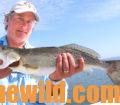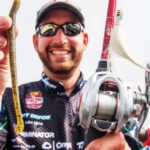Editor’s Note: Last week I gave you a roundup of offshore fishing in the Gulf of Mexico on the Upper Gulf Coast off Alabama’s shoreline with Captain Troy Frady. This week we’ll be looking at inshore fishing in late May and June with Captain Sonny Schindler and Shore Thing Charters (https://www.shorethingcharters.com/), headquartered at Bay St. Louis, Mississippi.
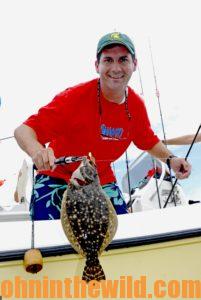 John E. Phillips: Sonny, yesterday you said that after you catch speckled trout you fish for redfish and an occasional flounder. Do you ever just target flounder after you’ve caught speckled trout and redfish?
John E. Phillips: Sonny, yesterday you said that after you catch speckled trout you fish for redfish and an occasional flounder. Do you ever just target flounder after you’ve caught speckled trout and redfish?
Captain Sonny Schindler: Yes, we do. In past years, flounder have been an incidental catch when we’ve been fishing for redfish and speckled trout. Up until last year we rarely caught a flounder. There just didn’t seem to be very many in our area. But then last year we started catching more flounder than we had in past years. And this year, we’ve caught more flounder than we have in the last three or four years combined. I’ve talked to marine biologists about the flounder, and they’ve said that flounder are very cyclical. Some people have thought that they may have started coming back after the BP oil spill finally had been cleaned out of the marsh. Others have said that because of climate change, the flounder have come back. I think that flounder are just cyclical in that we will have a large population of flounder in our area for maybe for 1-3 years – and then they just don’t show up for several years after that. But for whatever reason, in 2021, we have had a bumper crop of flounder.
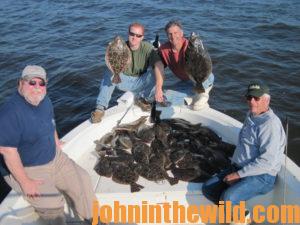 Our fishermen love to catch flounder. Our limit in Mississippi is 10 flounder that are longer than 12 inches per person. I haven’t had a party catch a limit of 10 flounder each in many years. We feel extremely lucky if our party catches 6 flounder per boat or per person. And we’ve had some really-good catches of flounder in the fall of the year, but now they’re starting to show up too in late May and June. In past years, we may have gone weeks or months without having a flounder brought in by any of our captains. But now, we’re seeing flounder caught on a daily basis. Those flounder are a great bonus fish because everyone enjoys eating flounder and seeing those big, flat-sided fish slide over the edge of a dip net.
Our fishermen love to catch flounder. Our limit in Mississippi is 10 flounder that are longer than 12 inches per person. I haven’t had a party catch a limit of 10 flounder each in many years. We feel extremely lucky if our party catches 6 flounder per boat or per person. And we’ve had some really-good catches of flounder in the fall of the year, but now they’re starting to show up too in late May and June. In past years, we may have gone weeks or months without having a flounder brought in by any of our captains. But now, we’re seeing flounder caught on a daily basis. Those flounder are a great bonus fish because everyone enjoys eating flounder and seeing those big, flat-sided fish slide over the edge of a dip net.
Phillips: What is your favorite bait for catching flounder?
Schindler: I like a Cocahoe minnow, also often called a mud minnow. I’ll put that live Cocahoe minnow on a lead-headed jig through the lips and drag it along the bottom, or I’ll use a short Carolina rig with just enough lead to get that minnow down on the bottom. The flounder bite is often hard for our anglers to detect. As I’ve mentioned, we will catch flounder oftentimes when we’re fishing for speckled trout or redfish. The flounder may hit the minnow to kill it, but then you have to wait a few seconds and make sure the flounder has the minnow in its mouth before you set the hook. If you try and set the hook when you get that first bite, you’ll usually pull the bait away from the flounder. But if you wait two or three seconds and then slowly start to lift your pole until you feel the weight of the fish on the line and then set the hook, you’re much more likely to catch the flounder.
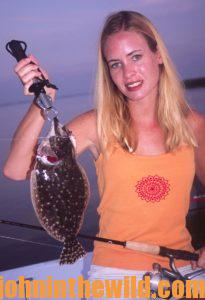 I think many anglers miss more flounder than they catch for this reason. I don’t fish when I’m guiding a party, but I watch how my anglers are fishing – especially if they’re fishing live bait in shallow water with a cork. When I see a cork bounce fairly well and then sit in place and not move off either because my angler isn’t paying attention, or he doesn’t know what to do when the cork’s bounced and then that cork stays in that same position and doesn’t move, nine times out of 10 that will be a flounder bite. So, I’ll tell the angler to lift up on his rod tip just a little. And, when the fisherman follows my instruction, he’ll usually say, “I think I am stuck.” Then when the cork starts moving, I’ll say, “Set the hook,” and he or she will catch a flounder.
I think many anglers miss more flounder than they catch for this reason. I don’t fish when I’m guiding a party, but I watch how my anglers are fishing – especially if they’re fishing live bait in shallow water with a cork. When I see a cork bounce fairly well and then sit in place and not move off either because my angler isn’t paying attention, or he doesn’t know what to do when the cork’s bounced and then that cork stays in that same position and doesn’t move, nine times out of 10 that will be a flounder bite. So, I’ll tell the angler to lift up on his rod tip just a little. And, when the fisherman follows my instruction, he’ll usually say, “I think I am stuck.” Then when the cork starts moving, I’ll say, “Set the hook,” and he or she will catch a flounder.
So, to catch a flounder, after you feel or see the bite, don’t set the hook, wait a couple of seconds, lift-up on the rod tip, and if you feel the weight of the fish, set the hook. The flounder is kind of a lazy fish. It’s well-camouflaged and laying on the bottom. A flounder waits for a baitfish to get really close before it attacks. Once the flounder has killed the baitfish, the flounder will suck the baitfish into his mouth and sit there on the bottom, waiting on another baitfish. Flounder don’t swim around like other fish do, they enjoy just being on the bottom and letting the food come to them.
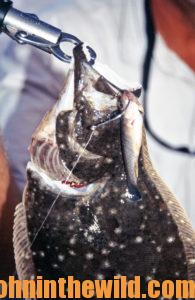 To contact Captain Sonny Schindler call 228-342-2206, Email: info@shorethingcharters.com or visit https://shorethingcharters.com.
To contact Captain Sonny Schindler call 228-342-2206, Email: info@shorethingcharters.com or visit https://shorethingcharters.com.
Roussos Seafood Restaurant’s Baked Stuffed Flounder
This wonderful recipe from one of Alabama’s premier seafood restaurants will be loved by all ages and is one the Phillips’ family has prepared for more than 30 years. .
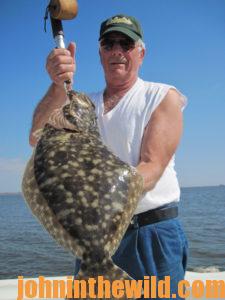 Ingredients:
Ingredients:
1/2-pound butter
1 cup white onion, minced
1/2-cup green onions, minced
1-1/2-cups celery, minced
3 cloves garlic, minced
1 cup parsley, chopped
2 cups seasoned breadcrumbs
2 cups cornbread, finely chopped
1/2-pound fresh crabmeat
Salt and pepper, to taste
8 flounder (1- to 1-1/2-pounds each)
16 whole fresh shrimp
Preparation:
In butter, sauté white onions, green onions, celery, garlic and parsley. Gradually stir in 1 cup of bread and 1 cup of cornbread, cooking until thickened. Add crabmeat and thicken further with remaining breadcrumbs and cornbread. Add salt and pepper to taste. To prepare flounder: split each flounder, and fill with dressing. Garnish each fish with 2 whole shrimp. Then cook under the broiler about 15 minutes or until the fish are done.
 This delicious recipe is found in John E. and Denise M. Phillips’ “The Best Wild Game & Seafood Cookbook Ever: 350 Southern Recipes for Deer, Turkey, Fish, Seafood, Small Game and Birds” from Amazon at https://www.amazon.com/gp/product/B00AN7GDW4/. You may have to copy and paste the click into your browser. You can go to John’s Author’s Page at http://amzn.to/XW2URC to learn about his other outdoor books. “The Recipes You Can’t Live Without: Freshwater & Saltwater Fish & Seafood” at http://amzn.to/1edLWr0, and “13 Saltwater Fish Recipes You Can’t Live Without” at http://amzn.to/13FmoPy also feature yummy saltwater fish recipes.
This delicious recipe is found in John E. and Denise M. Phillips’ “The Best Wild Game & Seafood Cookbook Ever: 350 Southern Recipes for Deer, Turkey, Fish, Seafood, Small Game and Birds” from Amazon at https://www.amazon.com/gp/product/B00AN7GDW4/. You may have to copy and paste the click into your browser. You can go to John’s Author’s Page at http://amzn.to/XW2URC to learn about his other outdoor books. “The Recipes You Can’t Live Without: Freshwater & Saltwater Fish & Seafood” at http://amzn.to/1edLWr0, and “13 Saltwater Fish Recipes You Can’t Live Without” at http://amzn.to/13FmoPy also feature yummy saltwater fish recipes.
Tomorrow: Florida Tripletails – How to Catch Them with Captain Sonny Schindler

